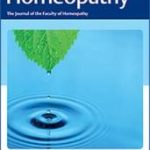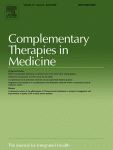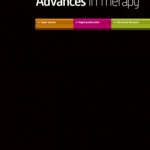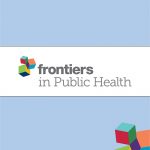Archivio: Pubblicazioni
Environmental Homeopathy: Homeopathic Potencies Regulate the Growth and Toxicity of Raphidiopsis raciborskii (Cyanobacteria) and can be Tracked Physico-Chemically. Part 2: Physico-chemical Results

Introduction The control of cyanobacterial toxicity and growth by homeopathic potencies was described in Part 1 of this two-part report. Here, a parallel approach characterized the physico-chemical features of the potencies used and the liquid medi... [Leggi...]
MONARCH Inventory for Causal Attribution in Homeopathy Case Reports: Explanation and Elaboration
Background The Modified Naranjo Criteria for Homeopathy (MONARCH) inventory is a novel and useful tool for assessing the likelihood of a causal relationship between the homeopathic intervention and the ultimate clinical outcome. Objectives To exp... [Leggi...]
Management of Polycystic Ovarian Syndrome: A Qualitative Inquiry among Complementary and Alternative Medicine Practitioners in South Africa

Background Polycystic ovarian syndrome (PCOS) is a complex reproductive endocrinopathy affecting 4–20% of females of reproductive age. PCOS and its consequent complications such as infertility, diabetes mellitus and cardiovascular disease signifi... [Leggi...]
Estimation of the Likelihood Ratio of Different Symptoms for Six Homeopathic Medicines: Prognostic Factor Research

Background Arsenicum album, Causticum, Nux vomica, Pulsatilla nigricans, Rhus toxicodendron and Sulphur are frequently prescribed homeopathic medicines; however, their symptoms, as mentioned in different homeopathic literature works, have rarely be... [Leggi...]
Ultradiluted Homeopathic Medicines Cause Apoptosis in RPMI-8226 Multiple Myeloma Cells in vitro: a Pilot Study

Background Multiple myeloma (MM) is the second most common type of cancer among hematological malignancies and is difficult to treat. Although controversial in nature, homeopathy's effects have been tested on a wide range of cancer cell types in vi... [Leggi...]
Exploring the Role of Homeopathic Intervention in Post-COVID Functional Gastrointestinal Disorders: A Case Series of 12 Patient Profiles

Background In the last 2 years of the pandemic, a wide range of cases of post-COVID functional gastrointestinal disorders (PC-FGIDs) has been reported. Aim This case series aimed to investigate the role of homeopathic intervention in the treatmen... [Leggi...]
Assessing the Feasibility of a Two-Cohort Design to Assess the Potential of Homeopathic Medicinal Products to Reduce Antimicrobial Resistance in Turkeys (The HOMAMR Project)—Study Protocol

Background Antimicrobial resistance (AMR) is a serious public health concern worldwide. The European Union requires a reduction in the use of antibiotics by 50% by 2030, with separate regulations on organic production that give preference to homeop... [Leggi...]
Action of Carduus marianus 6cH on Hepatopathy and Gallstone in Ambystoma mexicanum (Axolotl): Case Report
Background Carduus marianus is a Mediterranean plant used for treating liver diseases. One of its properties is that it inhibits fat peroxidation, which can contribute toward the prevention of metabolites that are harmful to the liver. Objective ... [Leggi...]
Brain Wave Oscillations as an Objective Neurophysiological Biomarker of Homeopathic Subjective Well-Being

Background Homeopathy uses the “similitude principle” to arouse a therapeutic reaction in the body against its own disorders. For this to occur optimally, the medicinal pathogenetic effects must present similarity with the totality of the indiv... [Leggi...]
The Patient Population at Homeopathic Outpatient Clinics across India: A Clinical Data Collection Study

Background Even though several initiatives have been undertaken in different locations worldwide to collect clinical data in homeopathy, it is important to further investigate these aspects in the context of health care in India. Objective The st... [Leggi...]







